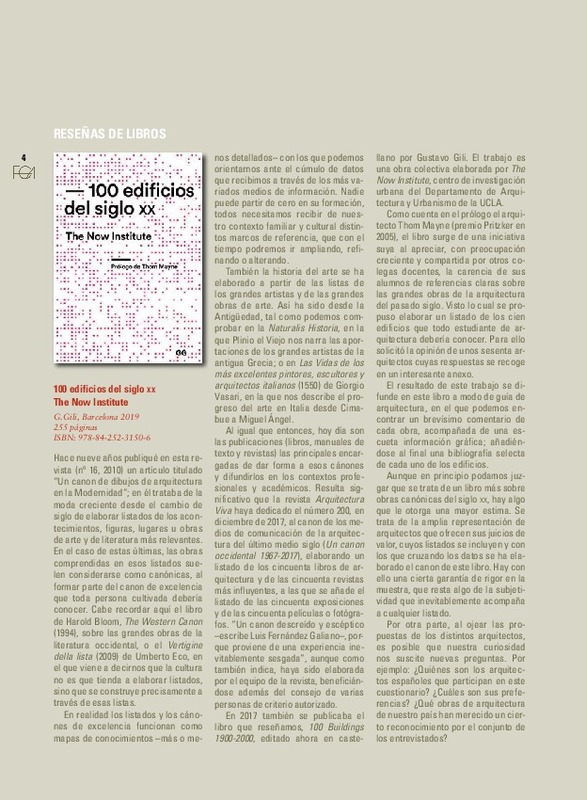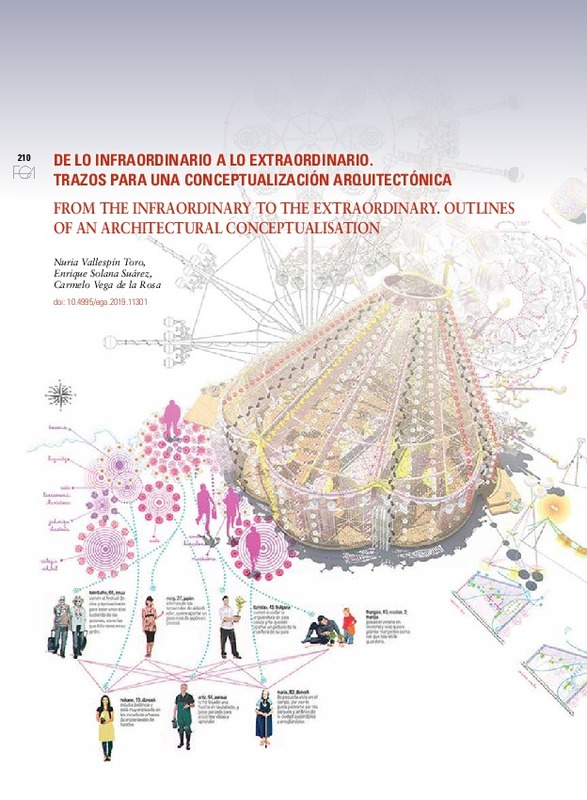- RiuNet repositorio UPV
- :
- Investigación
- :
- Material investigación. Editorial UPV
- :
- Revistas UPV. Editorial UPV
- :
- EGA. Revista de Expresión Gráfica Arquitectónica
- :
- EGA. Vol 24, No 36 (2019): Conversando con... Odile Decq
JavaScript is disabled for your browser. Some features of this site may not work without it.
Refinar
EGA. Vol 24, No 36 (2019): Conversando con... Odile Decq
Tabla de contenidos
Artículos
- conversando con...Odile Decq
- La escalera imperial del Real Monasterio de San Miguel de los Reyes de Valencia (1601-1603): hipótesis de traza
- Espacio, masa y ornato en la transición del Gótico al Renacimiento en España
- Los artesonados renacentistas del Palacio Ducal de Pastrana (Guadalajara): análisis geométrico
- Aproximación a la obra de Juan Antonio Camacho de Saavedra. Arquitecto, ingeniero y maestro de obras del Marquesado de Priego y del Obispado de Córdoba en el siglo XVIII
- Imágenes de un patrimonio desaparecido: la Puerta de Triana en Sevilla
- Levantamiento gráfico de patrimonio industrial en actividad: Nueva Cerámica de Orio
- Las técnicas gráficas en los proyectos de la Universidad de Granada. Un recorrido de la ilustración a la autarquía
- El complejo termal de Via Terracina en Nápoles entre levantamiento y uso
- De ríos y montañas: la poética de la pintura tradicional en la arquitectura china contemporánea
- Los dibujos de Aldo van Eyck para su casa en Loenen aan de Vecht: un laberinto hecho de cosas
- Dibujos inéditos de Javier Feduchi para SEDI
- José Luis Picardo: arquitecto, muralista, dibujante e ilustrador
- Tebeos sobre Le Corbusier. Cinco historietas gráficas sobre su vida y obra. Sobre el personaje (1/2)
- Blade Runner: Los Ángeles 2019. Los dibujos de una ciudad en decadencia
- El panorama gráfico arquitectónico de los ochenta. Arquitecturas de escape y dibujos de resistencia
- De lo infraordinario a lo extraordinario. Trazos para una conceptualización arquitectónica
- Arquitecturas interactivas. Prácticas visuales emergentes en la ciudad interfaz
- De pixel a voxel. Arquitectura entre identidad líquida y imagen física
Aproximación histórica al dibujo de arquitectura en España en el siglo XX
- Fernando Garcia Mercadal: el dibujo como manifiesto









